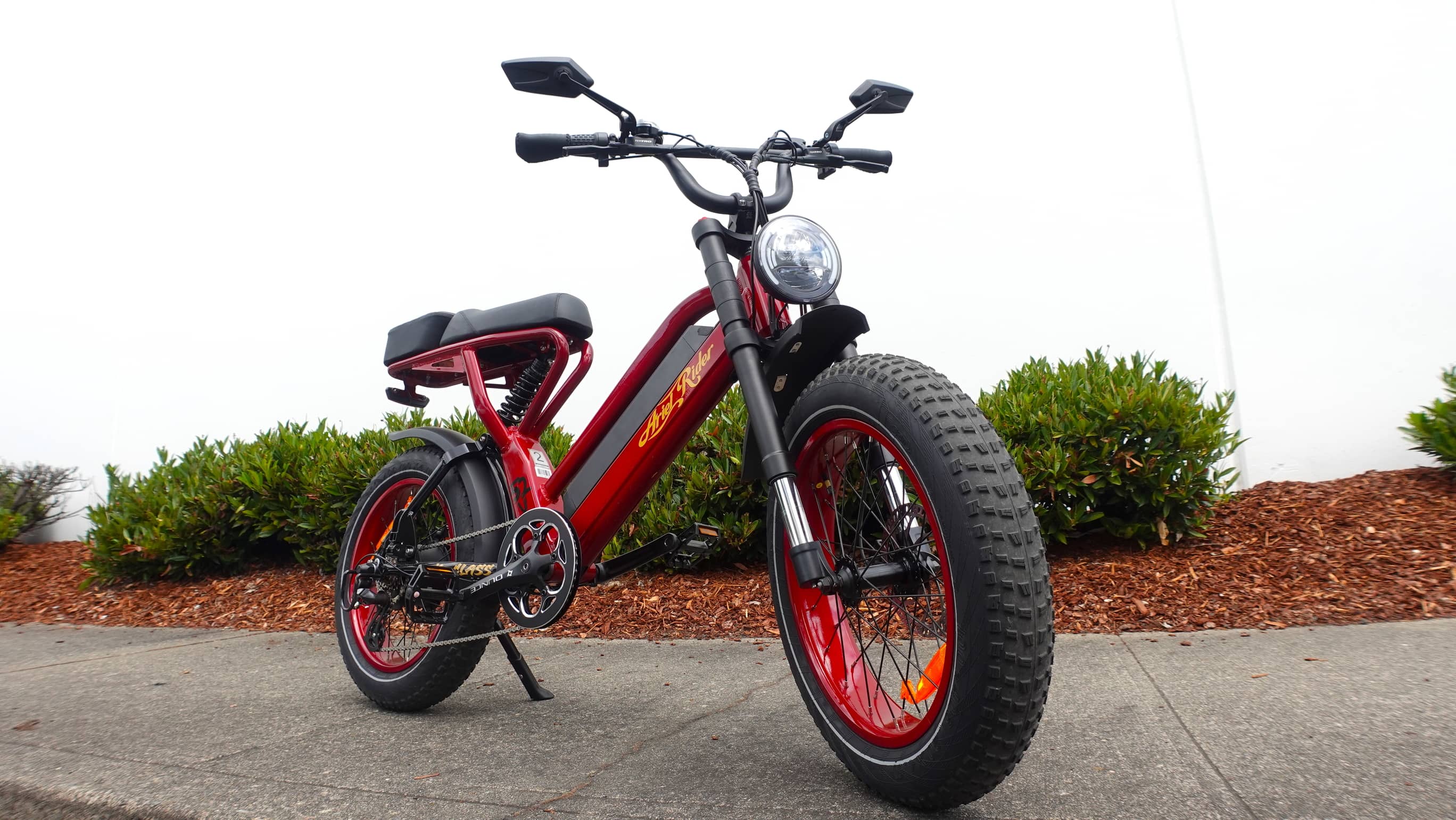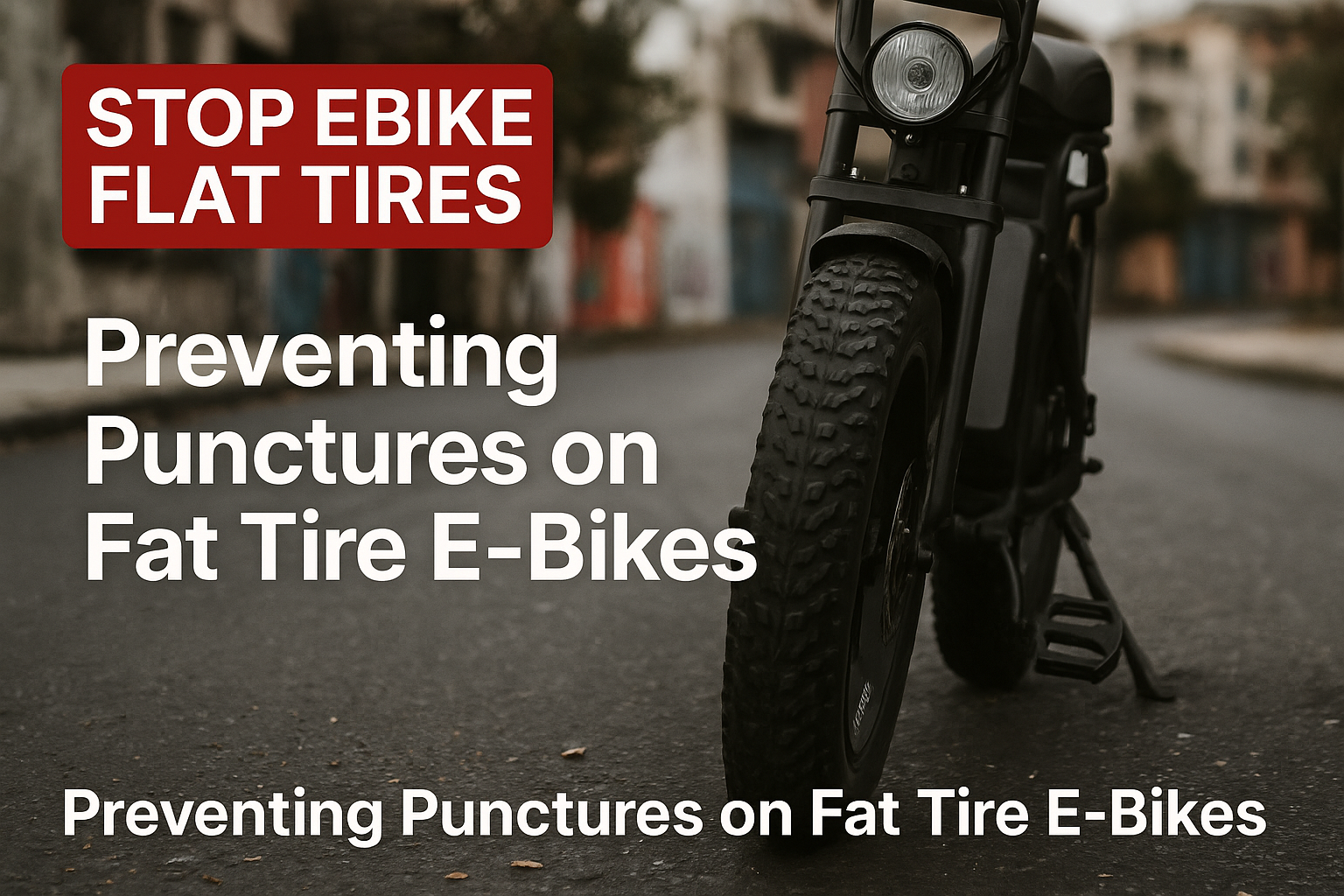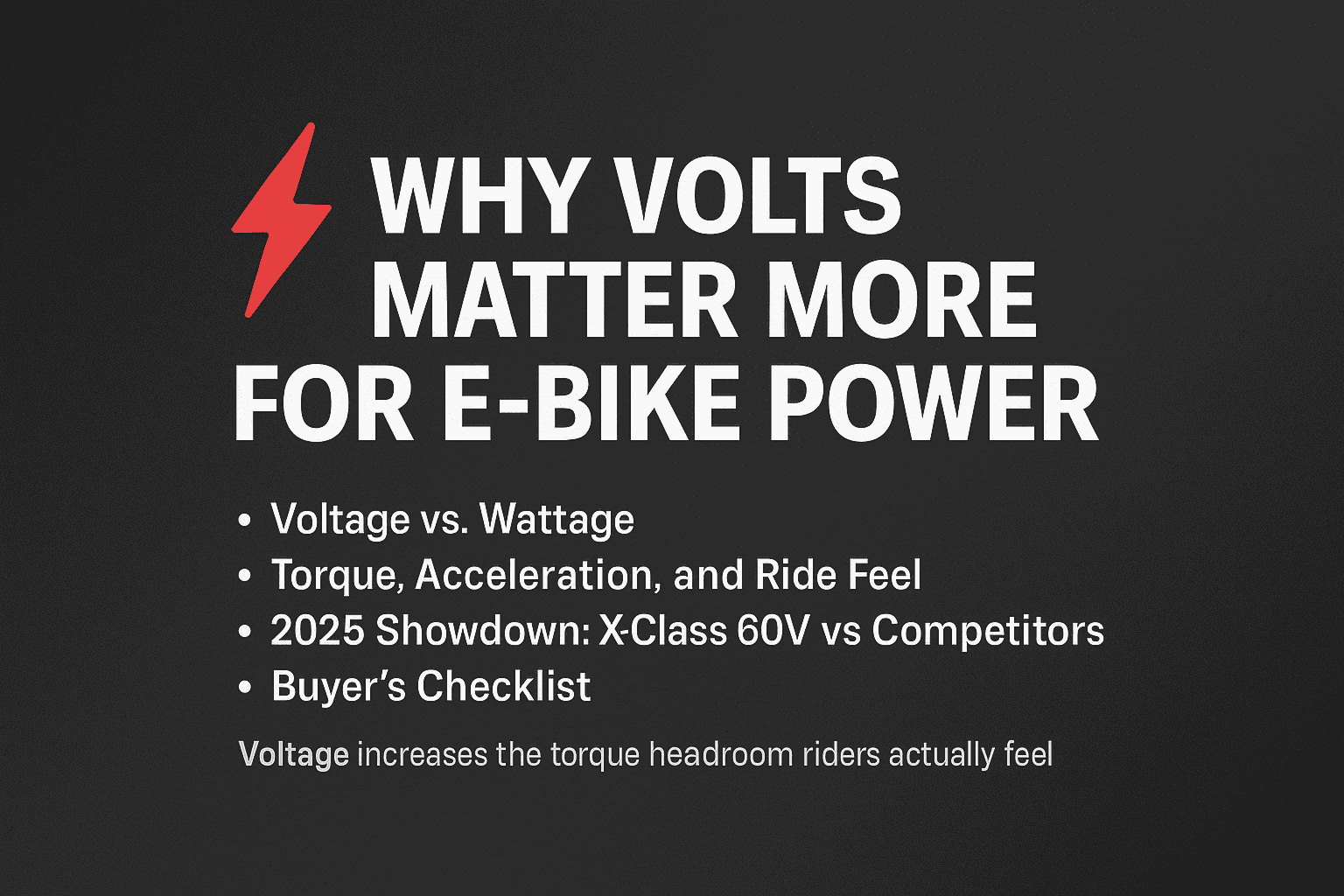Why Torque and Voltage Matter More Than “Watt Labels” on Fat Tire E-Bikes
If you’ve ever shopped for a “1000W fat tire e-bike”, you’ve probably noticed that nearly every brand claims to be “more powerful.” But here’s the reality: watt labels don’t tell the full story.
When it comes to real-world riding—hill climbing, acceleration, load carrying, and responsiveness—torque and voltage architecture define your experience far more than the wattage printed on a sticker.

1. The Problem with “Wattage” Marketing
Most e-bike listings emphasize a watt number—like 750W, 1000W, or 1500W—to signal power. But what those numbers actually mean varies wildly.
- Nominal wattage: the sustained power output under normal conditions.
- Peak wattage: the short bursts of maximum output (sometimes only a few seconds).
The issue is that “1000W” might represent a brief spike, not consistent performance. A motor can claim 1000W but still underperform if it lacks the voltage headroom or torque output to maintain that power when climbing hills or carrying load.
In short: a “1000W” label is not the same as 1000W you can feel.
2. Torque Is the Real-World Power You Feel
Torque, measured in Newton-meters (Nm), is what pushes you forward and keeps you climbing. It’s the rotational force that actually propels your wheels.
- High torque = fast launches, strong climbs, responsive throttle.
- Low torque = sluggish starts, early slowdown on hills.
A bike with 110 Nm torque will always feel stronger than one with 80 Nm, even if both are labeled “750W.”
This is where the Ariel Rider X-Class 60V stands out.
It delivers 110–132 Nm torque, depending on the model—outperforming many bikes marketed at “1000W” or more.
That’s why most riders describe the 60V X-Class as “punchier,” even when the watt number looks smaller on paper.
3. Voltage Architecture: The Silent Power Multiplier
Here’s the physics:
Power (Watts) = Voltage × Current.
So, for the same current, a higher-voltage system delivers more total power—and it does it more efficiently.
A 60V system (like the X-Class 60V) can:
- Push more consistent power with less heat buildup.
- Maintain speed better under load or on long climbs.
- Reduce performance drop-off as the battery drains (less voltage sag).
Lower-voltage systems—like 48V or 52V—can hit similar peaks, but they often fade faster under real conditions. That’s why the 60V X-Class feels more alive, even at the same rated wattage.
It’s not about chasing a bigger number—it’s about how long that number stays real.
4. Controller Tuning and Motor Quality
Your motor’s true performance depends on how the controller is tuned. A smartly managed 750W system can outperform a poorly tuned 1000W one.

Key factors:
- Amp limits (how much current the controller allows)
- Thermal management (heat limits sustained output)
- Motor efficiency (quality of windings, magnets, and cooling)
The X-Class 60V’s setup is engineered for sustained torque without tapering. It’s not just a “bigger number” — it’s smarter power delivery.
5. What This Means in Real Riding
Example:
- A 52V “1000W” e-bike may surge quickly but lose power mid-climb.
- A 60V 750W bike with high torque will keep pulling at steady strength.
That’s why riders who upgrade from 48V or 52V systems to the Ariel Rider 60V platform immediately notice smoother throttle feel, better hill control, and fewer “flat spots” in acceleration.
In everyday language: voltage = stamina, torque = strength, and controller tuning = intelligence.
6. How to Read an E-Bike Spec Sheet (Without Being Misled)
When comparing fat tire e-bikes, don’t just look at “watts.” Look at how the entire system works together:
| Spec | Why It Matters | What to Look For |
|---|---|---|
| Torque (Nm) | Determines launch strength and climb ability | 100+ Nm for heavy riders or hilly terrain |
| Voltage (V) | Impacts consistency and efficiency | 60V for balanced torque and range |
| Battery (Ah) | Controls how long you can sustain that power | 20–35Ah range for long rides |
| Controller (Amps) | Limits current and shapes response | High-amp smart controllers perform better |
| Brakes & Tires | Translate power into control | 4-piston hydraulic brakes and puncture-resistant fat tires |
This holistic view gives you the real picture of e-bike performance, because a bike that looks great on paper isn’t useful if it fades halfway up a hill.
7. Why This Matters for Fat Tire E-Bikes
Fat tire e-bikes are heavier and face more rolling resistance. That means low-voltage systems need to work harder, drawing more current, generating more heat, and draining faster.
That’s why a 60V, high-torque system like the X-Class is ideal: it handles the extra weight of fat tires and still feels responsive.
Pair that with puncture-resistant tires, and you get both performance and practicality—power that lasts and tires that survive city debris.
8. How It Connects to “1000W” Bikes
You don’t need a “1000W” label to get “1000W performance.”
The Ariel Rider X-Class 60V proves that with:
- 60V voltage headroom
- 110–132 Nm torque
- Fat, puncture-resistant tires
- Hydraulic brakes for control
- Real range up to 35Ah
It’s engineered to outperform many “1000W” bikes that rely on inflated watt claims instead of system design.
If you haven’t read it yet, check out the detailed comparison in our related post:
👉 Fat Tire Ebike 1000W? Why the 60V X-Class Outruns the Hype
The Takeaway
When shopping for a fat tire e-bike, ignore the hype and read the specs differently:
- Torque = how strong it feels.
- Voltage = how long it stays strong.
- Design = how that power reaches the road.
The Ariel Rider X-Class 60V isn’t chasing watt labels—it’s built to deliver torque, traction, and long-term reliability that riders can actually feel.







Leave a comment
This site is protected by hCaptcha and the hCaptcha Privacy Policy and Terms of Service apply.